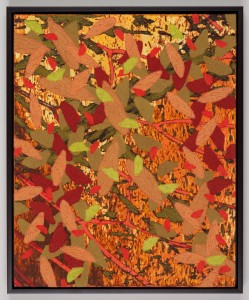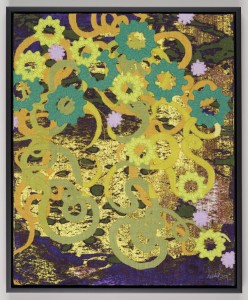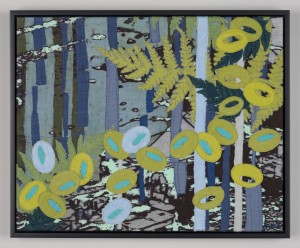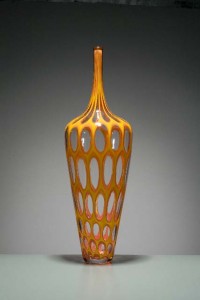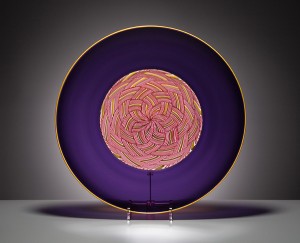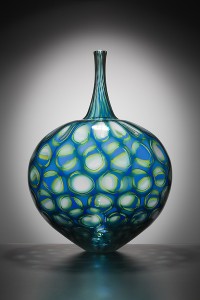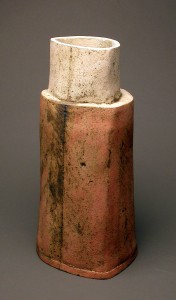
Rob has been showing his work in our gallery since 2005. Although Rob pays homage to the vase form, the work is equally respectful of sculptural vessels – robust, grounded forms with necks, collars and strong shoulders. The vessels are subtle and complex; the matte surfaces are treated to Rob’s language of mark making and edges have as much significance as the larger fields on the sides of the pots. There is a studied seriousness throughout his work; a well considered relationship with the material.
Rob founded Fiberarts Magazine in 1975, and later Lark Books in Asheville NC, that publishes some great craft books including our Penland series. Lately he is behind the project Marshall High Studios, the renovation of an old high school building into artist studios here in western North Carolina. He currently serves on our board of trustees, providing support and endless dry humor. Clearly he is not a lazy man.
No surprise that when he began doing ceramic work he took it on 200%. Since 1999, Rob has taken ten classes at Penland. Most have been in the clay studios, but just to keep everyone on their toes, he has taken drawing, glass, and iron classes as well.
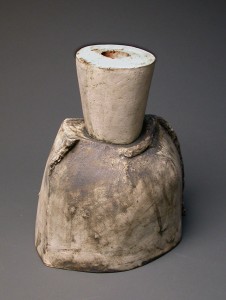
About Rob
I’ve been involved in the crafts/arts field in general and the fiber arts specifically for more than 30 years. This includes a checkered history as a tapestry weaver beginning in the early 70’s. Besides the design process, what I enjoyed most was the experience of the “hand” of the material.
That led me to ceramics in the 1990’s. I am in love with the basic material of ceramics: wet clay. While it took many years for the materials and techniques of textiles to become familiar to me, I have, for some wonderful reason, become comfortable with the language of clay in less than a decade. Working in clay is exhilarating, frightening, and totally satisfying.
While I have no academic background in clay (my undergraduate and graduate study was in Sociology and Anthropology), I have studied under some great ceramics teachers, all at the Penland School of Crafts. They include: George Bowes (1999), Richard Notkin (2000), Steven Heinemann (2001), Yih-Wen Kuo (2002), Richard Burkett and Lana Wilson (2004), and Anne Hirondelle (2005).
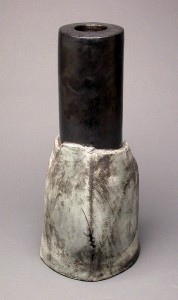
About the Work
I use high fire clays. My work is decorated with multiple layers of underglazes, stains, and oxides, which means that most pieces are fired many times. I don’t want to obliterate the clay itself, so I rarely use glazes.
I am most creative when I’m working within self-defined restrictions. My ceramic work for the last several years has had as its restriction the ability of the pieces to hold water and thus flowers or stems. Some of my forms are obvious in this, others less so. I think of my work as sculpture with a hidden ability to be functional. Commissions also give me restrictions, which is why I enjoy them.
I play with the surfaces of the clay both before and after I build the vessels. With each piece, I force myself to do something I’ve never done before. This means each piece is an experiment of sorts. It also means I destroy a lot of evidence, but it keeps the anxiety level sufficiently high and the joy of success addictively sweet.
While I’m creating, all the world, all speech, and all time stops. It’s a selfish process. But, I am extremely happy with the result of that process somehow speaks to me…..and others. It’s all a mystery, of course, but isn’t that the underlying attraction?


